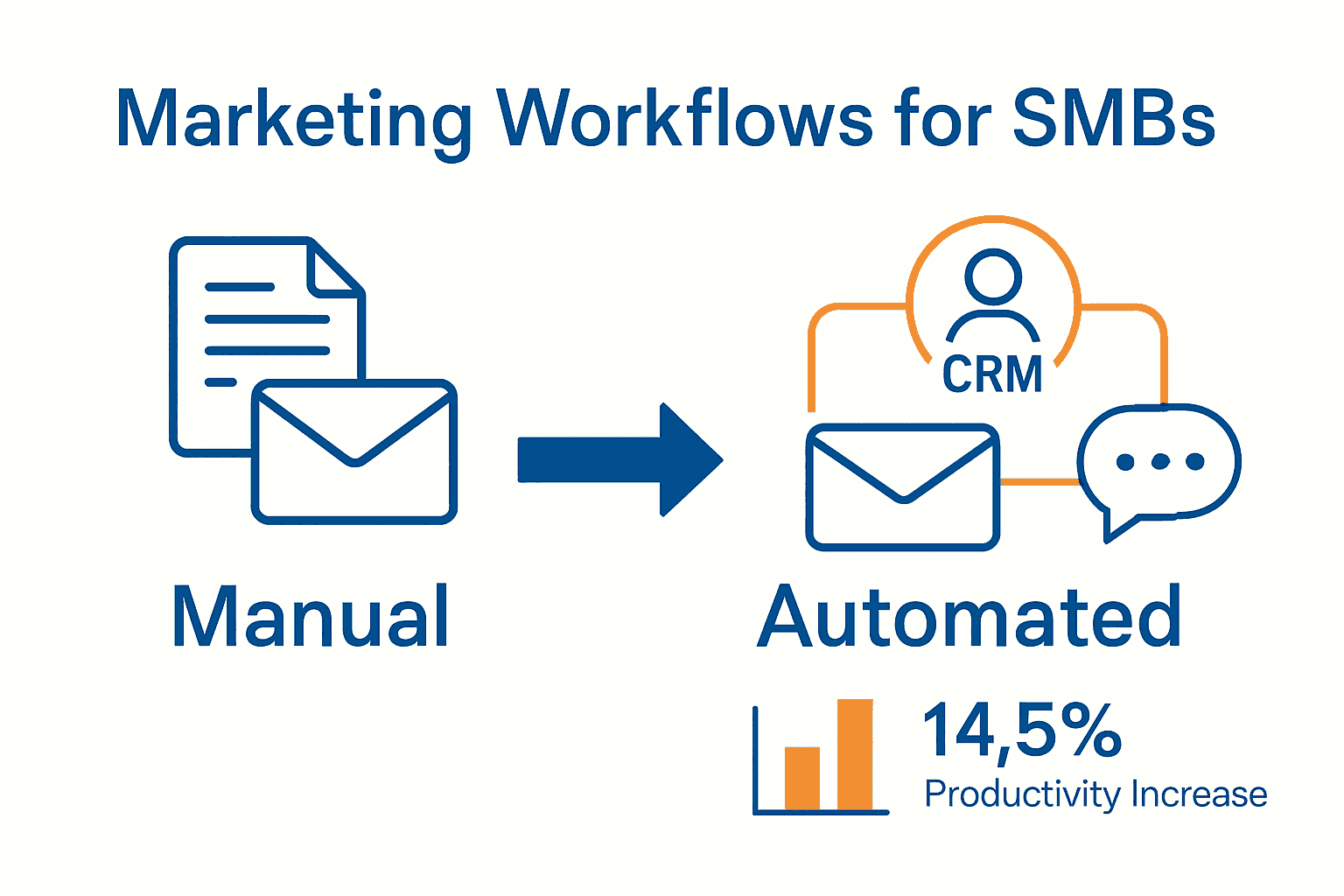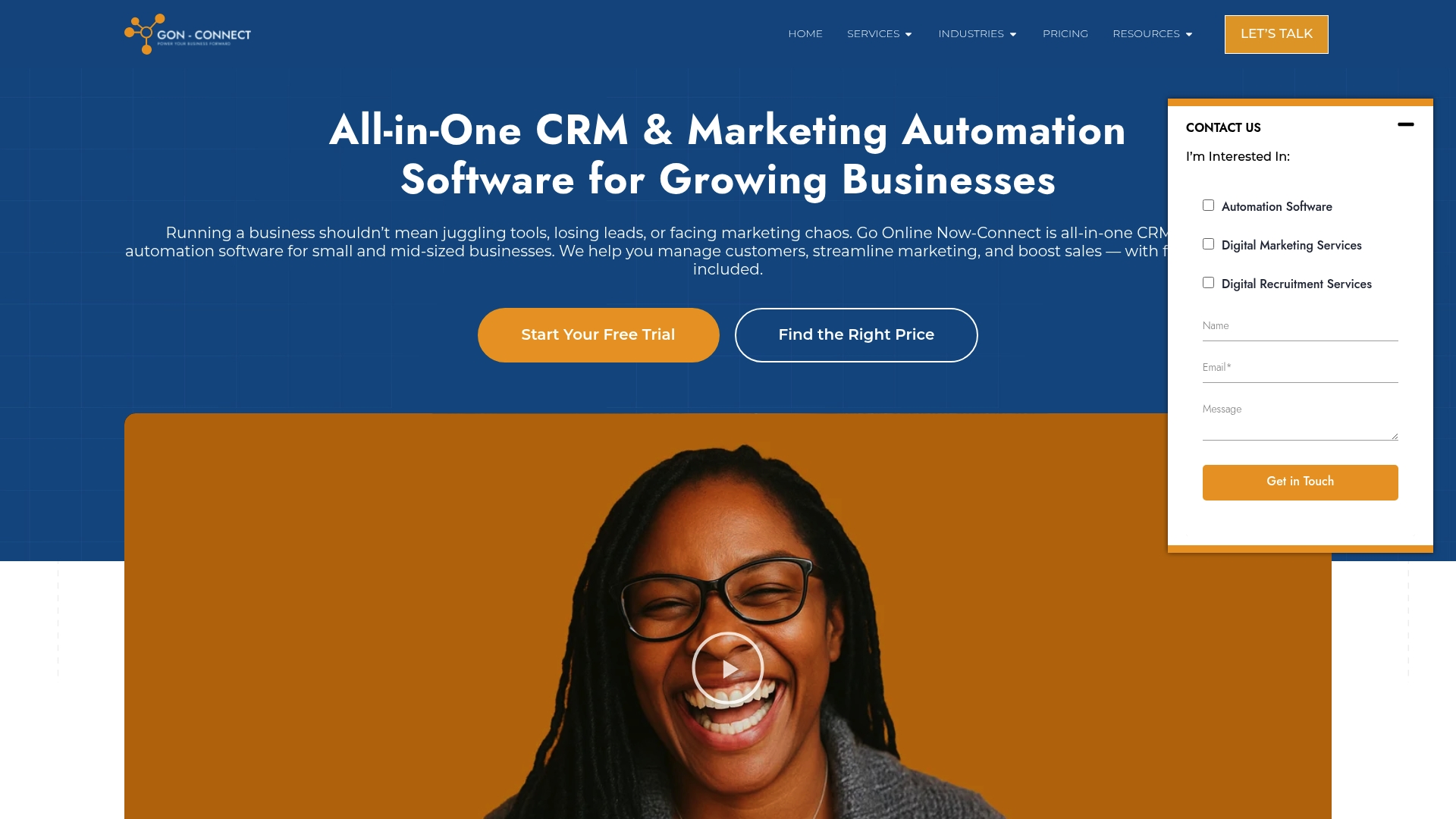Did you know that businesses using marketing automation see an average sales productivity increase of 14.5 percent? Many organizations struggle with manual workflows and scattered tools, which often leads to missed growth opportunities. By understanding how to assess, integrate, and refine your marketing automation processes, you can save valuable time, reduce errors, and create more personalized connections with your customers.
Step 1: Assess Current Workflows and Automation Tools
Optimizing your marketing automation starts with a clear picture of your current business processes. This critical first step helps you identify exactly where automation can deliver the most significant impact and efficiency gains.
Begin by mapping out your existing workflows across different business functions. Pull together your team and walk through each operational process step by step. Focus on areas like lead generation, customer communication, sales follow up, and marketing campaign management. Ask yourself key questions: Where are we spending the most manual time? Which repetitive tasks consume our team’s energy?
Use a simple spreadsheet or workflow visualization tool to document each process. Break down the steps and note:

- Time spent on each task
- Number of team members involved
- Frequency of the workflow
- Current pain points or bottlenecks
- Potential areas for automation
Pro Tip: Be brutally honest during this assessment. The goal is not to criticize current methods but to uncover opportunities for smarter working.
While documenting workflows, also take inventory of your existing tools. List out every software platform your business currently uses for marketing communication, customer relationship management, email campaigns, and other related activities. Identify:
- Current tool capabilities
- Integration potential
- Monthly or annual costs
- User experience challenges
Here’s a summary of key evaluation criteria for workflow and automation tools:
| Evaluation Area | Workflow Assessment | Tool Assessment |
|---|---|---|
| Focus Areas | Lead generation Sales follow-up Campaign management Customer communication |
Marketing communication CRM Email campaigns |
| Key Metrics | Time spent Team members Frequency Pain points Automation potential |
Capabilities Integratie Costs User challenges |
| Documentation Tools | Spreadsheets Workflow visualizers |
Software inventory list |
| Intended Outcome | Identify bottlenecks & tasks to automate | Build a roadmap for automation |
This comprehensive assessment provides a strategic roadmap for implementing targeted marketing automation.
 Checklist for Implementing Marketing Automation can help guide you through this initial evaluation process.
Checklist for Implementing Marketing Automation can help guide you through this initial evaluation process.
In the next step, you will analyze these workflows and tools to pinpoint precise automation opportunities that can dramatically improve your business efficiency.
Step 2: Integrate Essential CRM and Communication Channels
With your workflows mapped out, the next critical step is seamlessly connecting your customer relationship management (CRM) system with key communication channels. This integration transforms scattered interactions into a unified customer experience that drives engagement and growth.
Start by selecting a centralized CRM platform that can connect multiple communication channels. Look for solutions that offer native integrations with email, social media, messaging platforms, and phone systems. Your goal is creating a single source of truth where every customer interaction gets tracked and managed.
Consider these core integration priorities:
- Unified contact management
- Automated data synchronization
- Real time communication tracking
- Seamless lead routing
- Comprehensive interaction history
Pro Tip: Choose flexibility over complexity. Not every feature matters just because it exists.
Prioritize platforms that allow automatic data transfer between your existing tools. This means your email marketing software should instantly update contact records in your CRM. Sales conversations should automatically log interactions. Customer support tickets should populate customer profiles.
When evaluating integration options, 10 vragen voordat u marketingautomatiseringssoftware koopt can provide additional guidance on making the right technology choices.
Remember that successful integration is not just about technology but about creating a smooth workflow that reduces manual data entry and provides your team with actionable insights. Your communication channels should work together like a well orchestrated team.
In the next step, you will design targeted automation workflows that leverage these integrated communication channels to drive business growth.
Step 3: Segment Contacts for Targeted Automation
With your CRM and communication channels integrated, the next powerful strategy is segmenting your contacts to deliver laser focused marketing experiences. Contact segmentation allows you to transform generic communication into personalized journeys that resonate with specific audience groups.
Start by identifying meaningful criteria for dividing your contact database. These segmentation attributes go beyond basic demographics and dig into behavioral characteristics, engagement patterns, and specific business needs. Consider segmenting contacts based on:
- Industry type
- Company size
- Purchase history
- Engagement level
- Geographic location
- Service interests
- Previous interaction touchpoints
Pro Tip: Quality trumps quantity. A smaller highly targeted segment will outperform a large generic list every time.
Utilize your CRM tools to create dynamic segments that automatically update as contacts meet or move away from specific criteria. This means your marketing automation can dynamically shift contacts between segments based on their evolving behaviors and interactions.
For deeper insights into creating meaningful marketing segments, 25 Industry Specific Marketing Automation Use Cases can provide practical examples across different business contexts.
Remember that effective segmentation is an ongoing process. Regularly review and refine your segments to ensure they continue reflecting the nuanced characteristics of your target audience. Your goal is creating segments so precise that each contact feels like your message was crafted specifically for them.
In the next step, you will design targeted automation workflows that leverage these carefully constructed contact segments to drive personalized engagement and conversion.
Step 4: Design and Implement Automated Campaigns
With your contacts strategically segmented, it is time to craft intelligent automated campaigns that transform potential leads into loyal customers. Designing effective marketing automation campaigns requires a thoughtful approach that balances personalization with strategic engagement.
Start by mapping out customer journey stages for each segment. Identify key touchpoints where automated interactions can guide prospects smoothly through awareness, consideration, and decision phases. Your campaigns should feel like a natural conversation rather than a generic broadcast message.
Consider creating multiple campaign types:
- Welcome series for new contacts
- Nurture tracks for different audience segments
- Re engagement campaigns for inactive leads
- Onboarding sequences for new customers
- Post purchase follow up workflows
Pro Tip: Build in multiple exit points and alternate paths. Not every contact will follow a linear journey.
Each campaign should have clear objectives and measurable outcomes. Define specific triggers that will activate different campaign paths. These might include website interactions, email opens, form submissions, or specific behavioral signals unique to your business.
To accelerate your campaign design process, 6 Steps to Build a Scalable Marketing Automation System provides comprehensive insights into creating robust automated workflows.
Remember that successful automation is an iterative process. Start with simple campaigns and progressively add complexity as you understand your audience’s response patterns. Monitor key performance metrics and be prepared to adjust your approach based on real world results.
In the next step, you will learn how to monitor and optimize your newly implemented marketing automation campaigns for maximum impact.
Step 5: Test, Monitor, and Refine Automation Processes
Implementing marketing automation is not a set it and forget it strategy. Continuous testing, monitoring, and refinement are essential to ensure your automated campaigns deliver optimal results and adapt to changing business needs.
Begin with comprehensive testing before full deployment. Run pilot campaigns with small contact segments to validate your automation workflows. Create controlled experiments that allow you to compare different approaches and identify the most effective strategies.
Key areas to systematically test and monitor include:
- Email open and click through rates
- Conversion performance
- Engagement time
- Segment response patterns
- Campaign progression rates
- Customer journey completion
Pro Tip: Implement A B testing for every campaign element. Small modifications can produce significant performance improvements.
Establish a consistent monitoring rhythm. Set up dashboards that provide real time visibility into your automation performance. Track critical metrics that indicate campaign effectiveness and customer response.
To help you develop a robust tracking strategy, 50 Marketing Automation Metrics Business Should Track offers comprehensive guidance on selecting the most meaningful performance indicators for your business.
Remember that refinement is an ongoing process. Schedule monthly reviews to analyze campaign data, identify bottlenecks, and make incremental improvements. Be willing to completely restructure workflows that are not delivering expected results.
In the final step, you will learn how to scale and expand your marketing automation strategy for sustained business growth.
Ready to Eliminate Bottlenecks and Scale Your Marketing Automation with Confidence?
Trying to optimize your marketing automation process as an SMB often means running into time-wasting workflows, scattered tools, and tech overwhelm. If you relate to the challenges of complex integrations, inconsistent follow-ups, or the stress of managing too many platforms discussed in this article, you deserve a solution built for real business owners. Discover more insights and best practices in our Automatiseringsarchieven to see how others are overcoming the same pain points.

Why struggle with manual processes and disconnected tools when you can switch to Ga nu online - Maak verbinding? With all-in-one marketing automation, CRM, and live expert support, this platform gives you everything you need to save time and drive real growth. Take the next step: explore our platform to see how we deliver simple, affordable, and proven automation tailored to SMBs. Experience the relief of a done-for-you setup and support that actually cares. Visit our homepage to start optimizing your marketing automation today.
Veelgestelde vragen
How can I assess my current marketing workflows for better automation?
Begin by mapping out your existing business processes and identifying areas that require the most manual effort. Focus on repetitive tasks and document time spent on each, then use this information to pinpoint where automation could improve efficiency.
What are the best practices for integrating CRM with communication channels?
Select a CRM platform that supports integration with multiple communication tools to create a unified customer experience. Ensure automatic data synchronization so that all interactions are tracked seamlessly, which will help streamline your workflows.
How do I segment my contact list effectively for targeted automation?
Identify meaningful criteria such as industry type and engagement level to divide your contact database. Create dynamic segments that adjust automatically based on contact behaviors, which will allow for more personalized and engaging marketing campaigns.
What types of automated campaigns should I design for my business?
Consider creating various campaigns like welcome series, re-engagement campaigns, or onboarding workflows tailored to different audience segments. Map out your customer journey to identify key touchpoints for automated interactions, enhancing the likelihood of conversion.
How can I refine my automation processes for better results?
Implement continuous testing and monitoring of your automated campaigns to ensure optimal performance. Regularly analyze key metrics and be ready to make adjustments, aiming for incremental improvements over time to adapt to evolving customer needs.
Aanbevolen
- Understanding the Small Business Marketing Automation Process – Go Online Now
- Why Small and Midsized Businesses Need Marketing Automation in 2024 – Go Online Now
- Marketing Automation: A Step-by-Step Guide – Go Online Now
- Checklist for Implementing Marketing Automation | Go Online Now
- Top Digital Marketing Trends for Small Businesses

